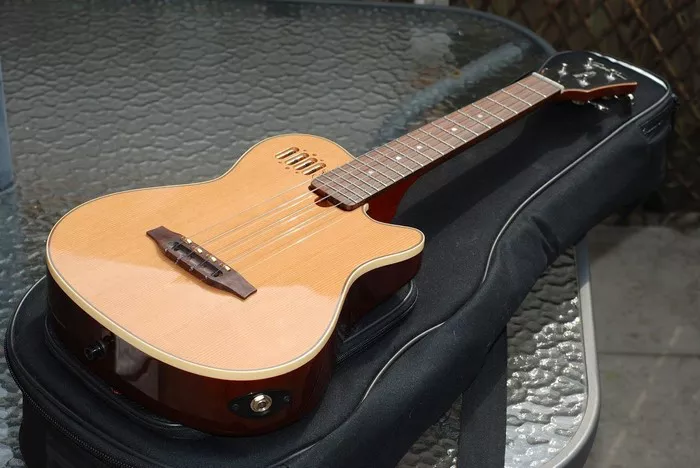Welcome to the enchanting world of ukulele playing, where the strum of a chord can evoke feelings of joy, nostalgia, and everything in between. At the heart of this musical journey lies the G chord—a fundamental cornerstone of ukulele harmony. In this article, we embark on a guided exploration of the G chord, delving into its definition, finger placement, variations, and musical context. Whether you’re a seasoned player seeking to deepen your understanding or a beginner eager to unlock the secrets of this essential chord, join us as we unravel the melodic mysteries of the G chord on ukulele.
Definition and Basics
In the realm of ukulele playing, few chords are as ubiquitous and essential as the G chord. As one of the fundamental building blocks of ukulele harmony, mastering the G chord opens up a world of musical possibilities for players of all levels. At its core, the G chord consists of three notes: G, B, and D. Understanding the structure and finger placement of this chord is key to unleashing its melodic potential.
Fingerings
To execute the G chord with precision and clarity, proper finger placement is paramount. Begin by positioning the index finger on the second fret of the C string, followed by the middle finger on the second fret of the A string, and finally, the ring finger on the third fret of the E string. Ensuring that each finger is perpendicular to the fretboard helps prevent unintentional muting of adjacent strings, maintaining the integrity of the chord’s sound.
Chord Variations
While the standard G chord serves as a cornerstone of ukulele repertoire, variations and embellishments offer opportunities for artistic expression and musical innovation. One such variation is the G7 chord, which introduces an additional note—the seventh—into the chord structure, imparting a sense of tension and resolution. Similarly, the Gm7 chord incorporates a minor seventh interval, lending a melancholic quality to its sound.
Beyond these variations, the G chord can also be played in different positions and inversions, each with its own unique sonic characteristics. Experimenting with these variations not only expands one’s harmonic palette but also fosters a deeper understanding of chordal relationships and musical theory.
Musical Context
Embedded within the G major scale, the G chord occupies a central role in countless chord progressions and compositions. Its harmonic stability and versatility make it a staple in genres ranging from folk and pop to jazz and beyond. Whether strummed leisurely on a sunny afternoon or incorporated into a complex arrangement, the G chord imbues music with warmth and vitality.
In the context of chord progressions, the G chord often serves as a point of resolution, providing a sense of closure and completeness. Paired with complementary chords such as C and D, the G chord forms the backbone of countless songs, from timeless classics to contemporary hits. Understanding its role within these progressions empowers players to navigate the musical landscape with confidence and creativity.
Practice Tips
For beginners embarking on their ukulele journey, mastering the G chord may initially pose a challenge. However, with patience and perseverance, proficiency is within reach. To facilitate the learning process, consider the following practice tips:
Start Slow: Begin by practicing the G chord at a relaxed tempo, focusing on accuracy and clarity of sound. Gradually increase the speed as comfort and proficiency improve.
Isolate Each String: To ensure that each note rings out clearly, practice plucking each string individually within the G chord shape. Pay attention to any muted or buzzing strings, adjusting finger placement as needed.
Smooth Transitions: Transitioning between chords smoothly is essential for fluid and cohesive playing. Dedicate time to practicing transitions between the G chord and other commonly used chords, such as C and D. Focus on maintaining consistent finger pressure and minimizing pauses between changes.
Utilize Metronome: Incorporating a metronome into practice sessions helps develop a sense of rhythm and timing. Set the metronome to a comfortable tempo and practice strumming the G chord in time with the beat, gradually increasing the speed as proficiency improves.
Patience and Persistence: Learning any new skill takes time and dedication. Celebrate small victories along the way and embrace the journey of growth and discovery.
Conclusion
In conclusion, the G chord on ukulele represents far more than a mere arrangement of notes on the fretboard—it is a gateway to musical expression and creativity. By understanding its structure, exploring variations, and practicing diligently, players can unlock the full potential of this versatile chord, enriching their musical journey in the process. So pick up your ukulele, embrace the G chord, and let the music begin.


